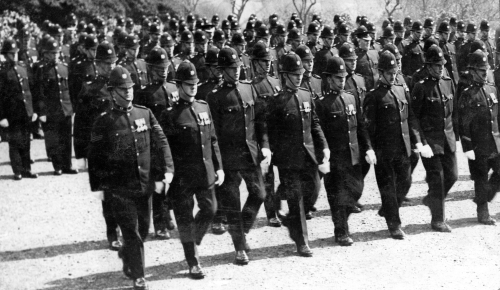Policing the Nation
An Exhibition about the History of Policing in Scotland
 Lamb Gallery, Tower Building
Lamb Gallery, Tower Building
1 April - 31 May 2013
Mon-Fri 09.30-20.30 Sat 09.30-16.30
This exhibition of photographs and artefacts relating to the history of Scottish policing is drawn from collections all across the country.
Modern policing in Scotland dates from 1800, when a police force was established in Glasgow by Royal Assent - a whole generation before the more famous London Metropolitan Police Act of 1829. Other parts of the country soon followed Glasgow’s lead and established their own forces - for example, Edinburgh in 1804 and Dundee in 1824. The Police Act (Scotland) of 1857 required all burghs to have their own force, and the whole of Scotland soon came to be served by local constabularies during the latter decades of the nineteenth century. At one stage, there were over one hundred separate police forces in Scotland, but the number declined during the twentieth century as a result of amalgamations into larger forces. In 1975 eight regional forces were created; these in turn have been replaced by one single national authority - known as Police Scotland - at the beginning of April 2013.
As the organisational shape of Scottish policing enters a new era, the exhibition looks back at the development of Scottish policing during the last two hundred years, highlighting many of the reforms and innovations that were adopted in response to the constantly changing social, political and technological contexts of modern Scotland.
 The exhibition features a range of documents, photographs and artefacts illustrating many aspects of Scottish policing since the nineteenth century, including:
The exhibition features a range of documents, photographs and artefacts illustrating many aspects of Scottish policing since the nineteenth century, including:
- uniforms and accessories
- communications equipment
- police transport
- women in policing
- training and professionalization
- detectives and criminal investigation
- police enforcement techniques
- the police in popular culture
The exhibition is part of a project funded by a Royal Society of Edinburgh on the theme of Crime and Policing in Scotland: Past and Present. The project is a collaboration between the Scottish Institute for Policing Research and the School of Humanities, University of Dundee.